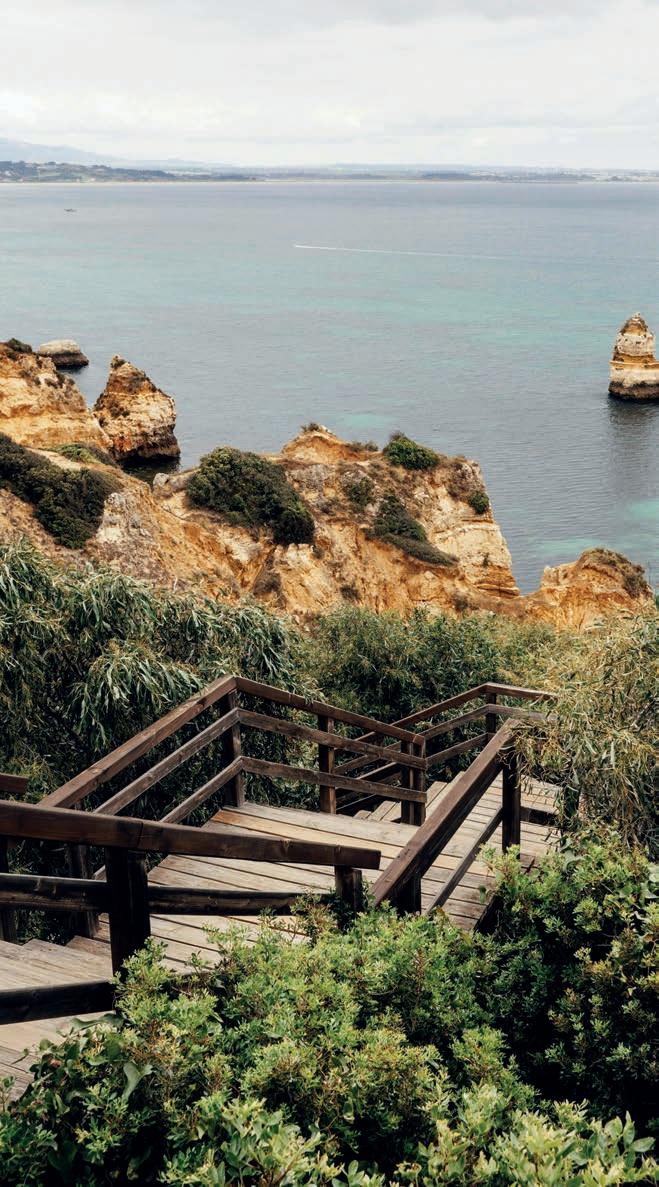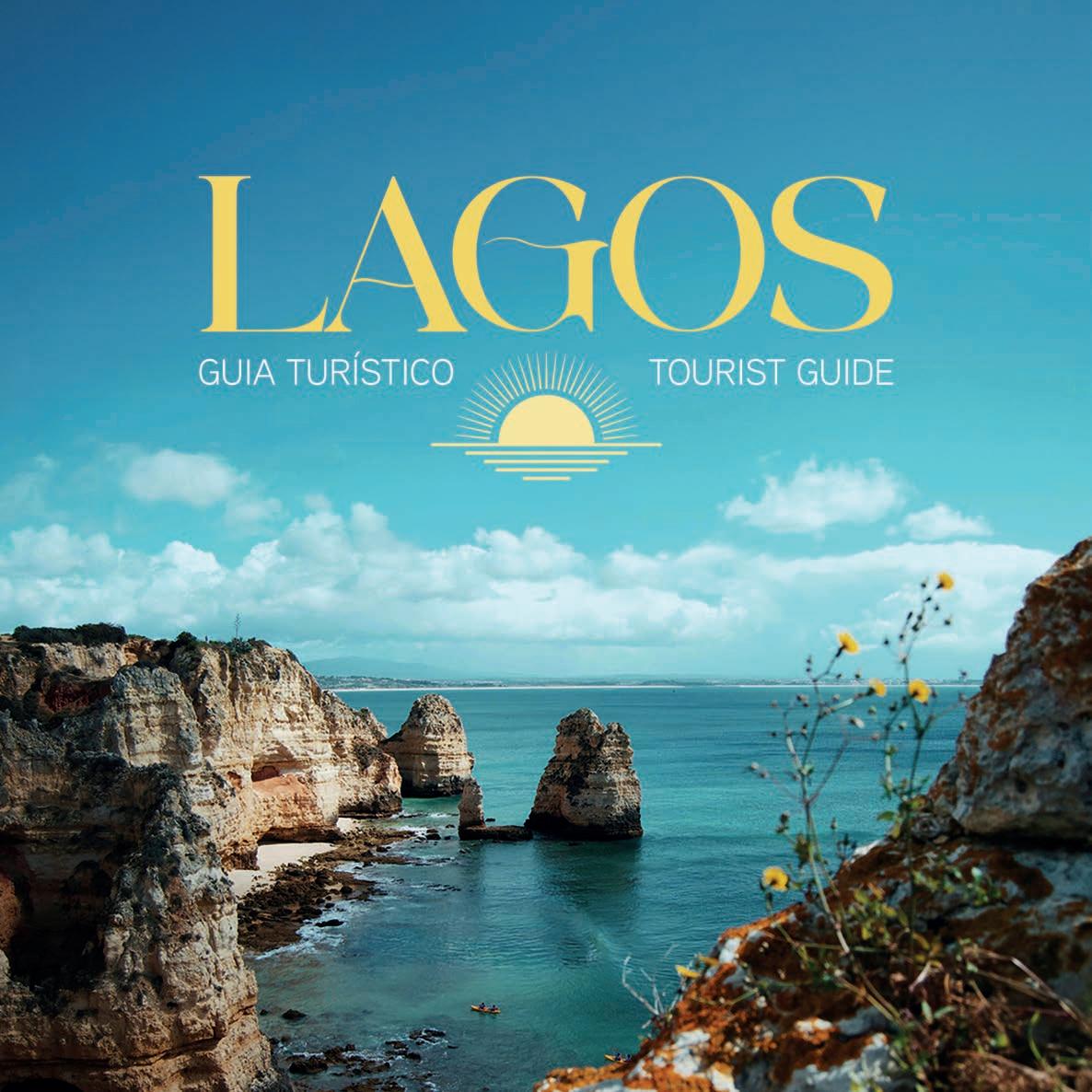
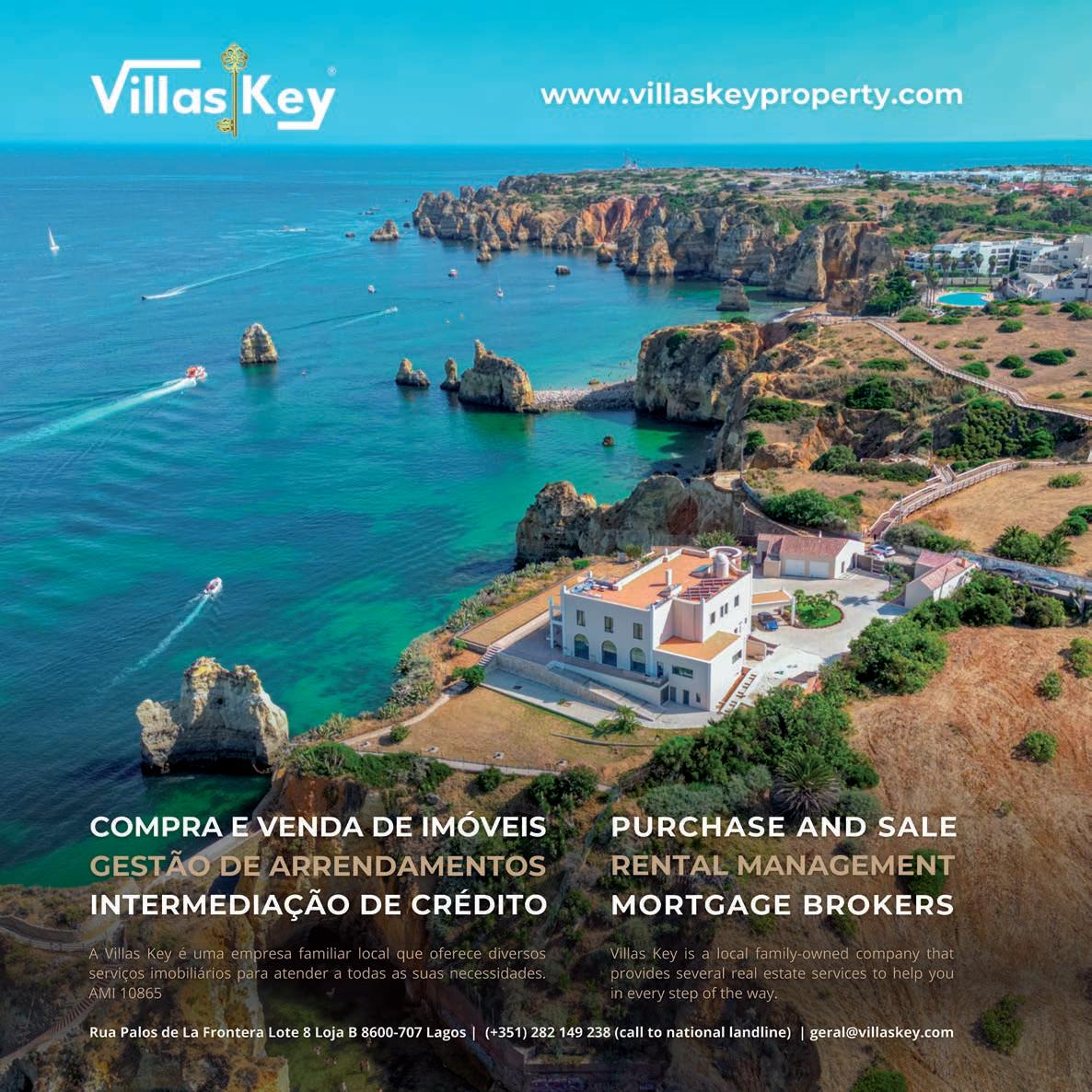



Situada no Barlavento do Algarve –zona ocidental–, a antiga Lacobriga tem as marcas da passagem de fenícios, gregos, cartagineses, romanos e mouros. Integrada do território de Portugal desde 1249, foi elevada a cidade em 1573, na altura do reinado de D. Sebastião. Tem paisagens naturais únicas e uma diversificada gastronomia local. Cerca de três mil lacobrigenses vivem presentemente numa área de perto de 213 quilómetros quadrados.
Located in the Barlavento region —the western part of the Algarve— the ancient city of Lacobriga bears the marks of Phoenician, Greek, Carthaginian, Roman and Moorish presence. It became part of Portuguese territory in 1249 and was granted city status in 1573, during the reign of King Sebastião.
Lagos is known for its unique natural landscapes and diverse local gastronomy. Today, around 3,000 residents of Lagos live within an area of approximately 213 square kilometres.
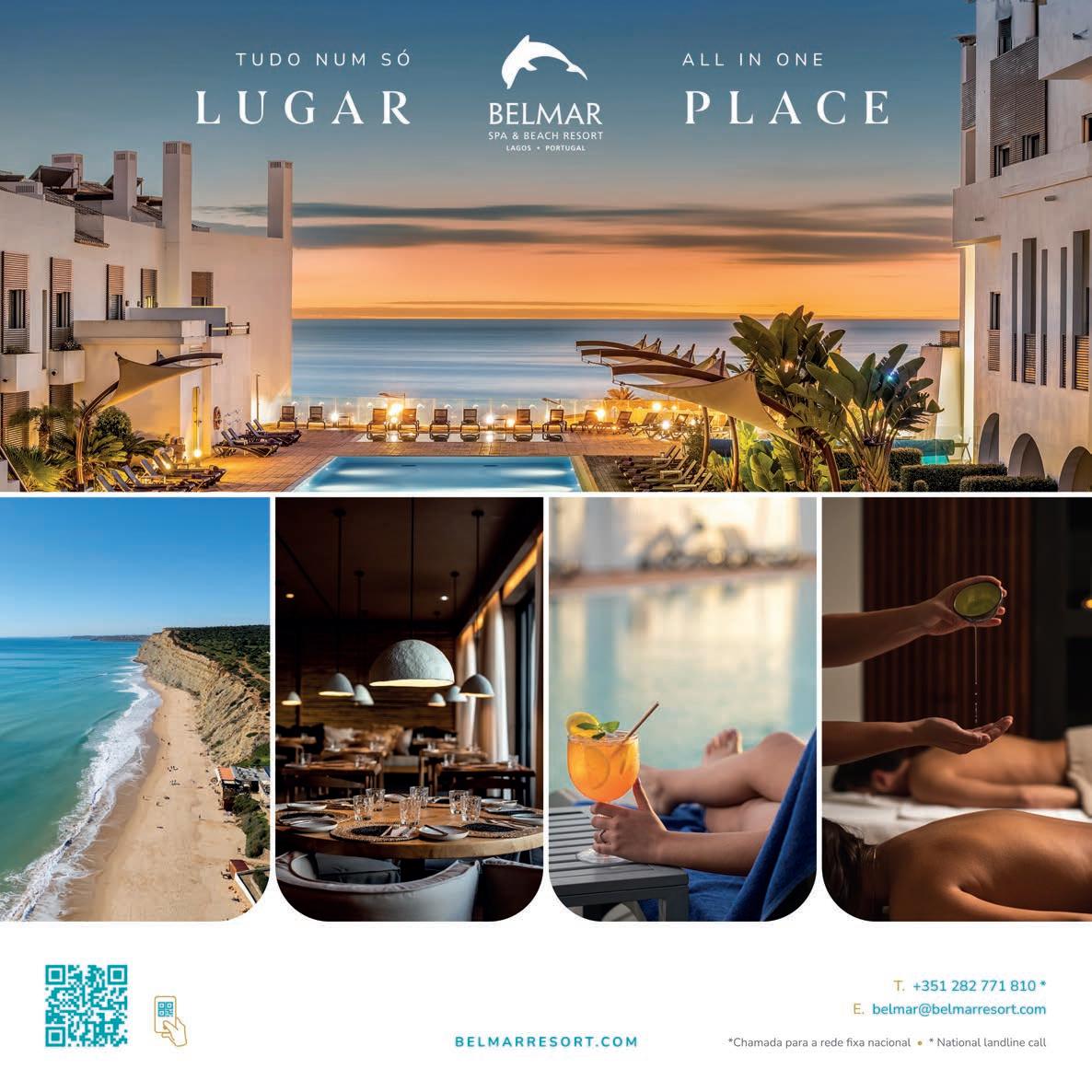

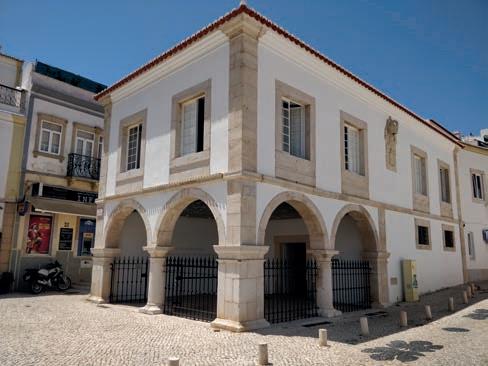
Edifício histórico cuja origem remonta aos Descobrimentos Portugueses do século XV, tendo ainda servido para venda de escravos. Em 2018, o Observatório Internacional dos Direitos Humanos galardoou-o com o título de Centro Internacional de Memória Viva da Dignidade Humana, dedicado a espaços que, apesar da sua história, foram convertidos em centros de cultura e de disseminação da Paz.
This historic building dates back to the Portuguese Discoveries of the 15th century and once served as a site for the sale of enslaved people. In 2018, it was awarded the title of International Centre of Living Memory for Human Dignity by the International Observatory on Human Rights, a distinction granted by this Portuguese organisation to places which, despite their history, have been transformed into cultural centres for the promotion of peace.
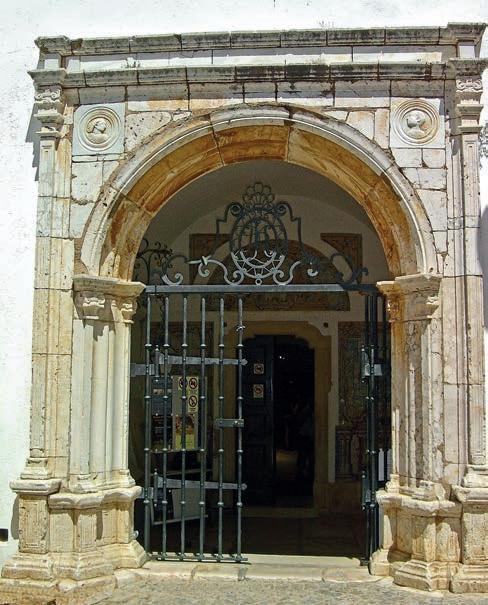
Com fundação a recuar a 1930, deve o seu nome ao patrono, o arqueólogo José Formosinho, natural de Lagos. O seu espólio, fruto de várias doações, não se esgota apenas pela arqueologia, sendo ainda possível admirar arte sacra, etnografia do Algarve, pintura, numismática, mineralogia e etnografia ultramarina.
Founded in 1930, the museum is named after its patron, the archaeologist José Formosinho, born in Lagos. Its collection, built largely through donations, extends well beyond archaeology: visitors can also explore sacred art, Algarvian ethnography, painting, numismatics, mineralogy, and overseas ethnography.
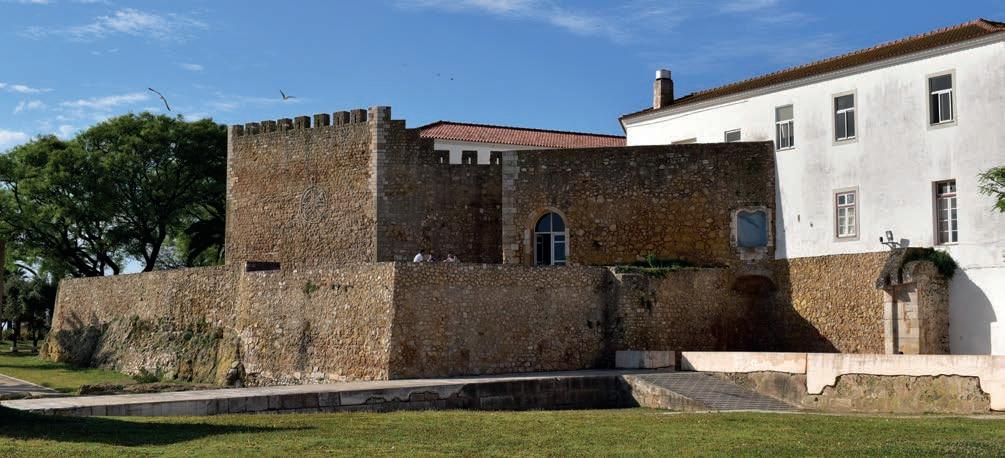
De origem medieval, foi sede do poder no Reino do Algarve e desempenhou um papel crucial na defesa da cidade ao longo dos séculos. Destruído no terramoto de 1755, ainda assim possui uma janela manuelina do século XVI. E diz a tradição local que terá sido aqui que, em 1578, o Rei D. Sebastião assistiu à sua última missa antes de partir para Alcácer-Quibir, onde viria a desaparecer.
Of medieval origin, this castle was once the seat of power in the Kingdom of the Algarve and played a key role in the city’s defence over the centuries. Although much of it was destroyed in the 1755 earthquake, it still preserves a Manueline window from the 16th century. According to local tradition, it was here that King Sebastião attended his final Mass in 1578, before departing for Alcácer Quibir (Ksar el-Kebir), where he would later disappear.

Situado junto ao mar, este forte edificado entre 1680 1690 defendia o acesso à cidade, cruzando fogo com a Porta da vila e o Castelo dos Governadores. Oferece uma vista panorâmica sobre a baía de Lagos e serve hoje como espaço cultural para exposições relacionadas com a história marítima de Portugal.
Located right by the sea, this fort was built between 1680 and 1690 to defend access to the city, forming a crossfire zone with the Town Gate and the Castle of the Governors. It offers panoramic views over the Bay of Lagos and today functions as a cultural space to host exhibitions related to Portugal’s maritime history.

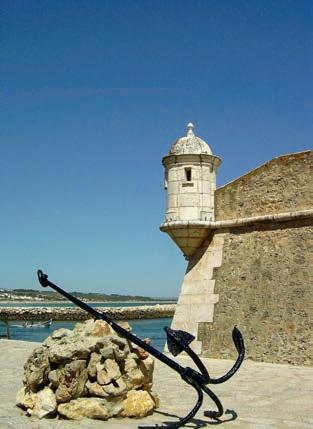
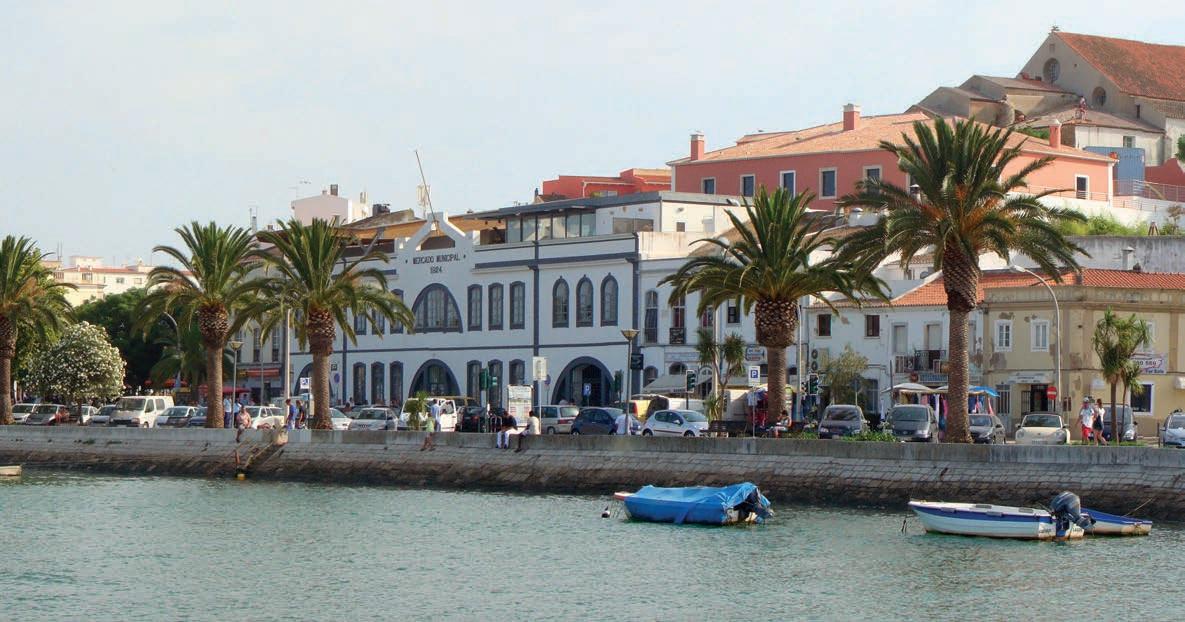
Avenida inaugurada durante as comemorações dedicadas à memória do Infante D. Henrique, o Navegador, em 1960. É hoje um incontornável local de passagem por quem visita Lagos, permitindo aos munícipes e aos milhares de turistas os passeios relaxantes e de lazer. Seja ao início do dia como ao entardecer e até mesmo à noite.
This avenue was inaugurated in 1960, during the celebrations held in memory of Prince Henry the Navigator. Today, it is a street anyone visiting Lagos cannot miss, offering both locals and thousand of tourists a place for leisurely and scenic walks, whether in the early morning, at sunset, or even by night.
É a praça onde se realizam a maior parte dos eventos a céu aberto na cidade.
Caracterizada pela estátua do Infante D. Henrique, O Navegador, inaugurada em 1960, da autoria do escultor português Leopoldo de Almeida. Evoca a estadia prolongada em Lagos deste ilustre filho do rei D. João I e da rainha Filipa de Lencastre, irmã do rei de Inglaterra, Henrique IV.
This is the square where most of Lagos’s open-air events take place. It is marked by the statue of Prince Henry the Navigator, inaugurated in 1960 and created by Portuguese sculptor Leopoldo de Almeida. The monument commemorates the extended stay in Lagos of this prominent son of King João I and Queen Philippa of Lancaster, sister of Henry IV of England.
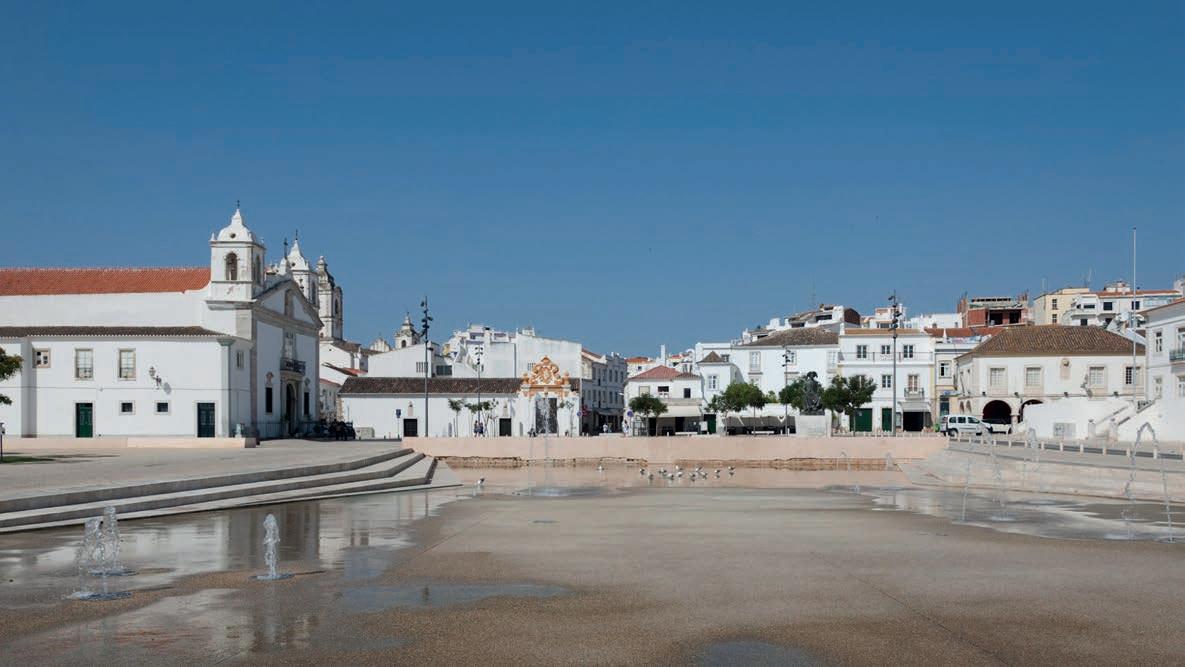
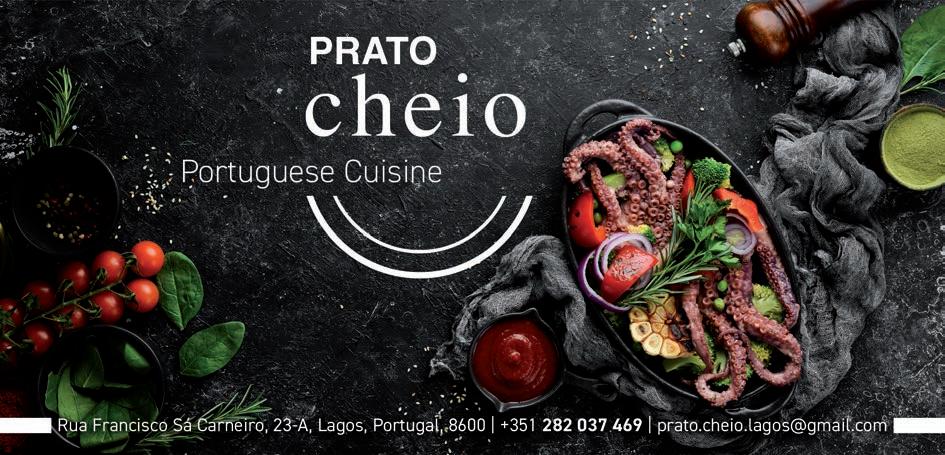

Um espaço que evoca o nome do autor português do poema épico “Os Lusíadas”, e cuja data da sua morte, 10 de Junho, é o Dia Nacional de Portugal. Destaque ainda para a presença do edifício com azulejaria de coloração verde e o desenho de calçada de Rui Paula, assim como o monumento aos mortos da Grande Guerra.
A square that pays tribute to the Portuguese author of the epic poem Os Lusíadas, whose date of death, 10 June, is now celebrated as Portugal’s National Day. Notable features include a building with green-coloured tilework, the pavement design by Rui Paula, and the monument to those who died in the Great War.

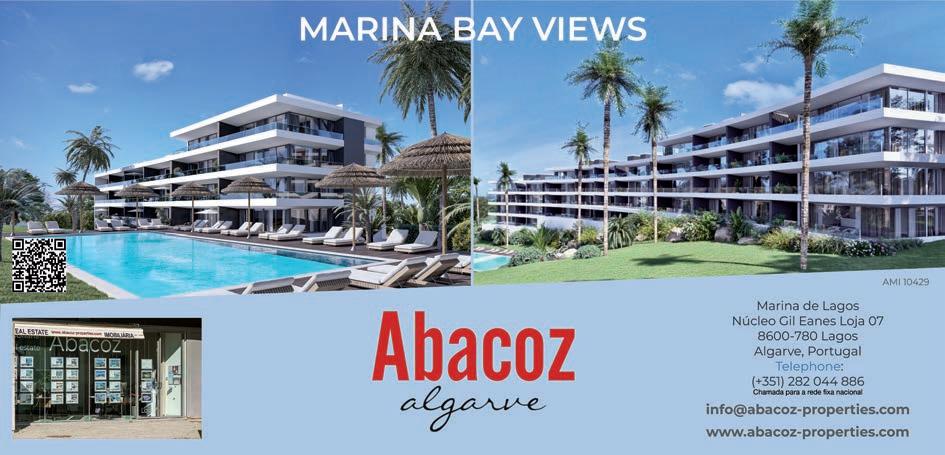



A Igreja de Santo António, construída em 1707 e reconstruída após o terramoto de 1755, destaca-se pelo seu estilo barroco e rica decoração interior em talha dourada. O altar contém o padroeiro Santo António. A igreja é complementada por azulejos azuis e brancos e a lápide de Hugo Beaty no pavimento.
Built in 1707 and rebuilt after the 1755 earthquake, the Church of Santo António stands out for its Baroque style and richly decorated gilded carving interior. Above the altar is the patron saint, Santo António, and the church is adorned with blue-and-white tiles. The gravestone of Hugo Beaty is set into the floor.
Está classificada como Monumento Nacional desde 1924, sendo um exemplo eclético de várias tendências estilísticas, construída entre os séculos XV e XVIII. Situa-se no local da anterior Ermida de N. Sra. da Conceição, edificada em 1325 e que no século XV era já Sede de Freguesia. Destaca-se pelas suas três naves, colunas dóricas, e talha dourada. Inclui um importante conjunto de pinturas do século XVI e uma Capela de Ossos. Sofreu várias reconstruções devido a terramotos.
Classified as a National Monument since 1924, this church is an eclectic example of several architectural styles, built between the 15th and 18th centuries. It stands on the site of the former Hermitage of Nossa Senhora da Conceição, originally built in 1325, which by the 15th century had already become the parish seat.
Notable features include its three naves, Doric columns, and gilded carving. The church also houses a significant collection of 16th-century paintings and a Chapel of Bones. It has undergone several reconstructions due to earthquakes.

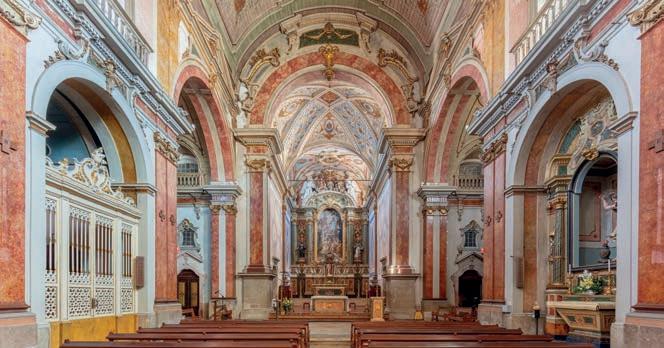
A Igreja Matriz de Odiáxere apresenta uma arquitetura religiosa com influências manuelinas e barrocas. É composta por uma nave única e uma capela-mor com teto de madeira em abóbada de berço. O altar principal é adornado com talha dourada e colunas salomónicas, enquanto o portal manuelino é ricamente decorado com motivos entrelaçados.
The main church of Odiáxere features religious architecture with Manueline and Baroque influences. It consists of a single nave and a main chapel with a wooden barrel-vaulted ceiling. The main altar is decorated with gilded carving and Solomonic columns, while the Manueline portal is richly adorned with interlacing motifs.
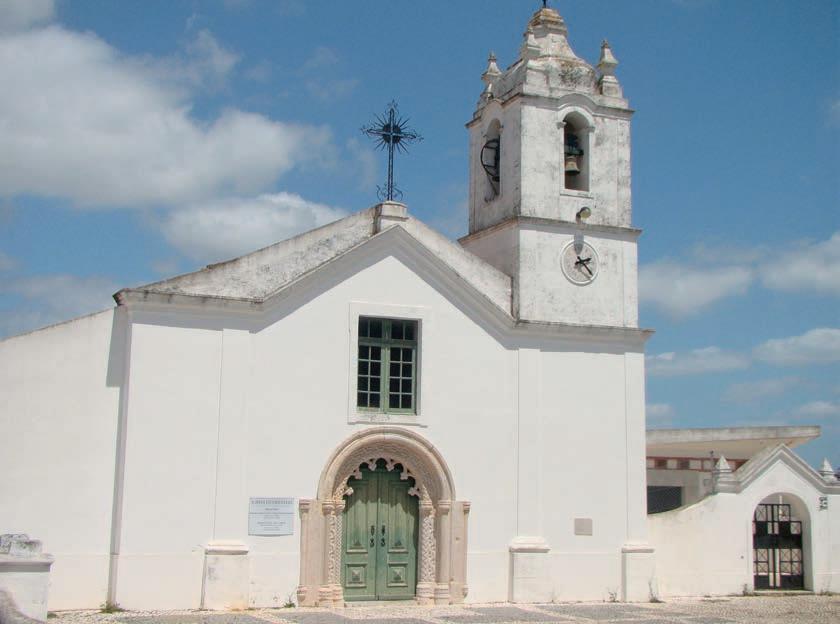
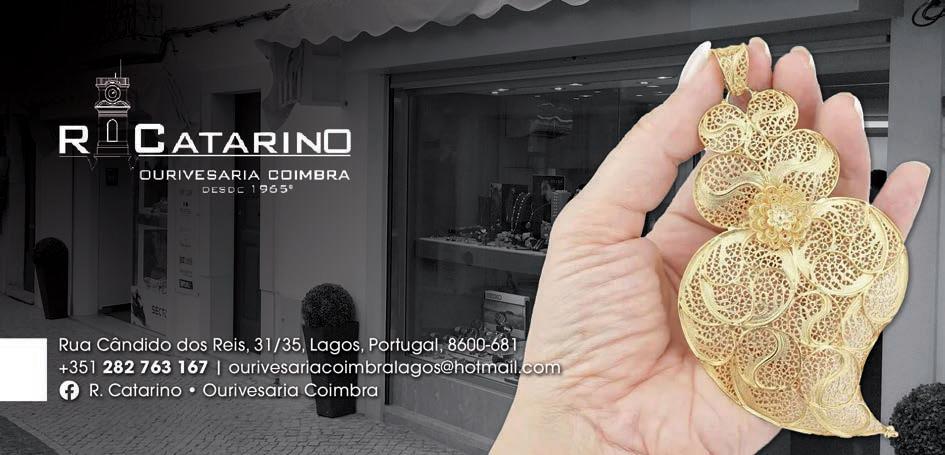

Construída em 1498, A Igreja da Misericórdia, sofreu restauros e ampliações nos séculos XVI e XVII. Em estilo neoclássico, a igreja tem uma nave única, capelas colaterais e uma sacristia. A fachada simétrica inclui uma porta central, uma janela com sacada e um nicho. O interior é enriquecido com retábulos do século XVIII.
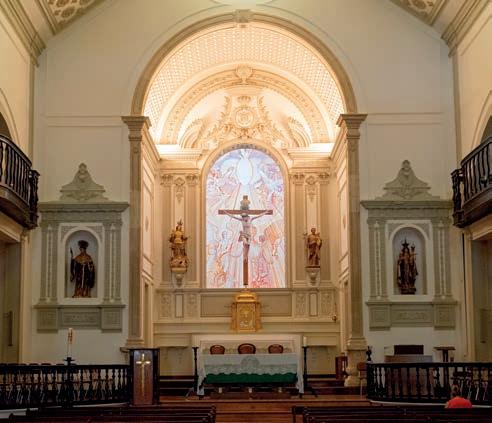
Built in 1498, this church, originally “the Church of Mercy”, underwent restoration and expansion during the 16th and 17th centuries. In the Neoclassical style, it features a single nave, side chapels, and sacristy. The symmetrical façade includes a central doorway, a balconied window, and a niche. The interior is enriched with 18thcentury altarpieces.
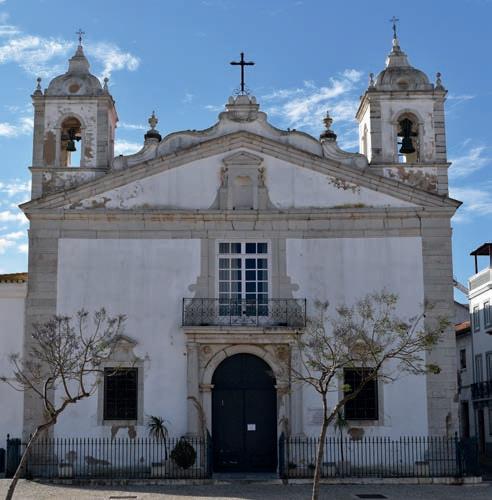

Prato tradicional que combina peixe fresco, batatas e especiarias. O caldo é preparado com cebolas, tomate, azeite, alho, louro, vinho branco e coentros, deixando ferver até apurar os sabores. Posteriormente, o peixe, as gambas e o lingueirão são adicionados e cozidos até atingirem a perfeição. O prato é servido sobre fatias finas de pão e polvilhado com salsa picada.
A traditional stew that brings together fresh fish, potatoes and spices. The broth is made with onions, tomato, olive oil, garlic, bay leaf, white wine and coriander, and simmered until the flavours are fully developed. The fish, prawns and razor clams are then added and gently cooked to perfection. It is traditionally served over thin slices of bread and sprinkled with chopped parsley.
Este guisado rico feito com búzios e feijão é um prato servido quente, mas isso não é motivo impeditivo para que o seu consumo não possa também ocorrer nos dias mais quentes, devidamente acompanhado por bebidas frescas. Uma iguaria que reflete bem a mistura harmoniosa entre o sabor do mar e da terra. Tudo no mesmo prato.
This rich stew made with whelks and beans is traditionally served hot, but that doesn’t stop people from enjoying it even on warmer days, especially when paired with a chilled drink. A dish that beautifully reflects the harmonious blend of sea and land, all brought together on a single plate.

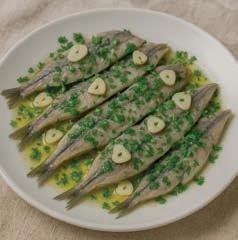
Um dos pratos algarvios de excelência, onde temos carapaus marinados, servidos com alho e coentros. São, primeiro, polvilhados com sal e colocados a refrigerar. No dia seguinte, são fervidos, despelados e desossados, deixando apenas a espinha central. O prato é tradicionalmente servido frio, perfeito para dias quentes de Verão.
One of the Algarve’s most iconic dishes, Carapaus Alimados features marinated horse mackerel served with garlic and coriander. The fish is first sprinkled with salt and chilled. On the following day, it is briefly boiled, skinned and deboned, leaving only the central spine. Traditionally served cold, this dish is perfect for hot summer days.
As lulas recheadas são preparadas com um delicioso recheio de pão, chouriço e ervas aromáticas. Após cozinhar a cebola, alho e outros ingredientes em azeite, o recheio é inserido nas lulas, que são seladas com palitos. As lulas são fritas e, em seguida, cozidas lentamente no molho de tomate e vinho para apurar os sabores.

This dish features squid stuffed with a delicious mixture of bread, chorizo and aromatic herbs. After gently frying onion, garlic and other ingredients in olive oil, the stuffing is prepared and placed inside the squids, which are then sealed with toothpicks. Squids are lightly fried, then slowly simmered in a tomato and wine sauce to allow the flavours to develop fully.
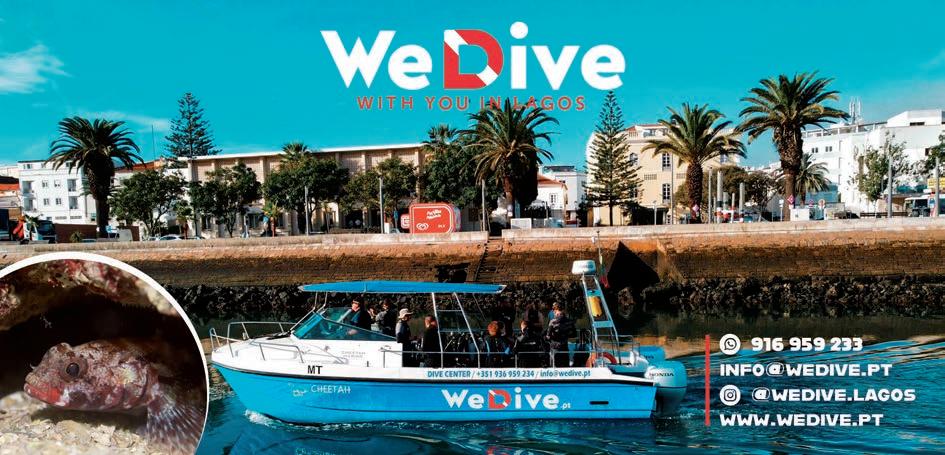
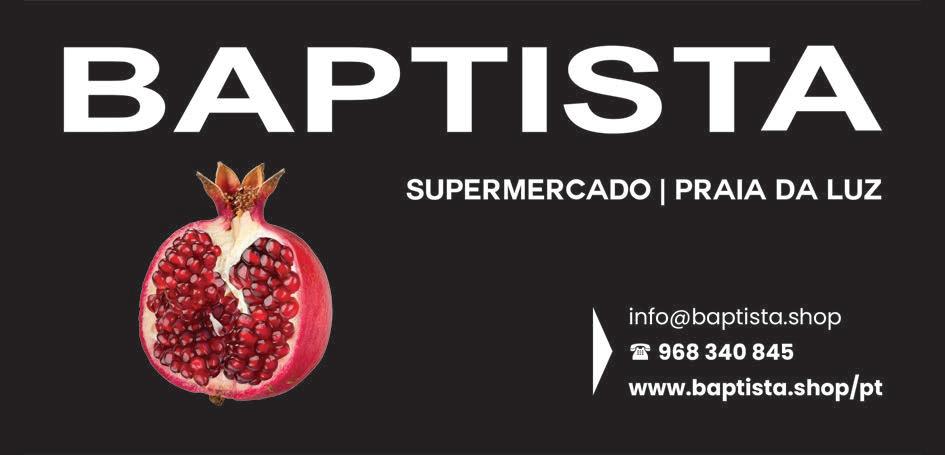
Doce conventual criado no século XVIII, com fios de ovos, ovos moles, miolo de amêndoa do Algarve e canela, foi nomeado para as 7 Maravilhas Doces de Portugal. Criado originalmente no Convento de Nossa Senhora do Carmo, honra ao fidalgo D. Rodrigo de Menezes, Governador da Praça, tornou-se uma referência na década de 1930 através da “Casa de Doces RegionaisTaquelim Gonçalves”.
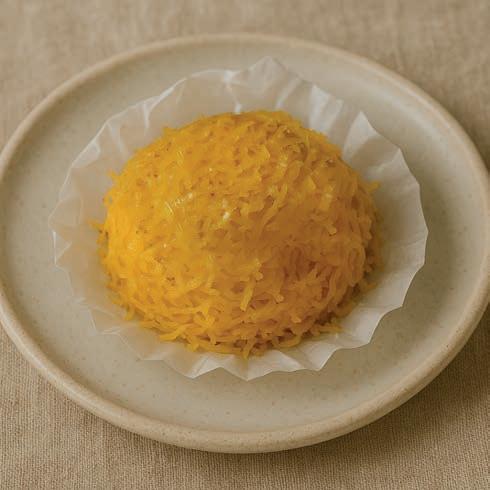
A conventual dessert created in the 18th century, made with egg threads, soft egg yolk cream, ground Algarve almonds and cinnamon. It was nominated as one of the 7 Sweet Wonders of Portugal. Originally crafted at the Convent of Nossa Senhora do Carmo, it pays tribute to D. Rodrigo de Menezes, a nobleman who served as Governor of the town. It became a local icon in the 1930s through the Casa de Doces Regionais –Taquelim Gonçalves.
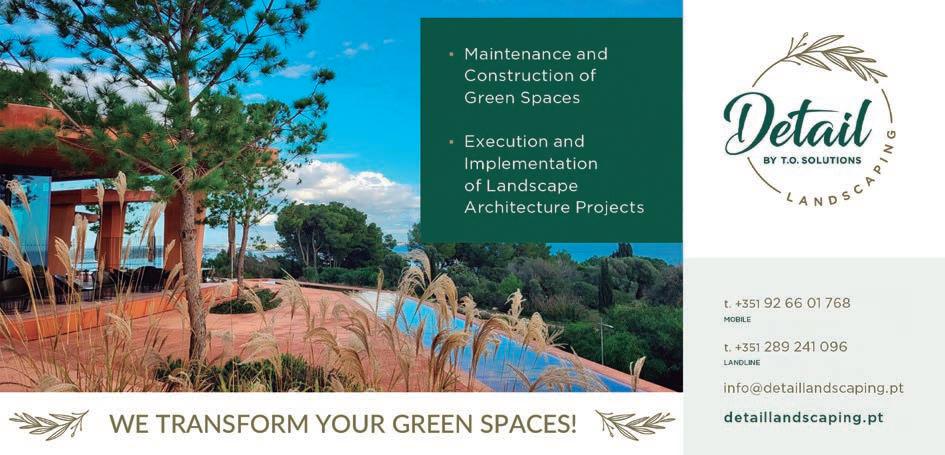
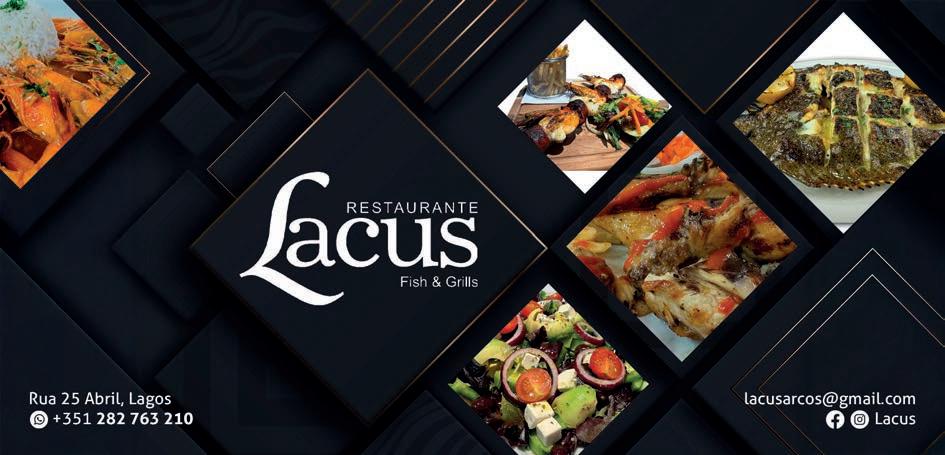
É um dos melhores locais para ver o pôr-dosol no Algarve – e, porque, não na Europa. Esta formação rochosa impressiona o visitante pela beleza que oferece nas vistas panorâmicas sobre o oceano. Há também passadiços e passeios de barco disponíveis para explorar as grutas e os arcos naturais que são já um ícone desta região e reconhecidos a nível mundial.
It is one of the best places to watch the sunset in the Algarve, and arguably in all of Europe. This rock formation captivates visitors with its breathtaking panoramic views of the ocean. Boardwalks and boat tours are also available, offering the chance to explore the caves and natural arches that have become icons of the region and are recognised worldwide.
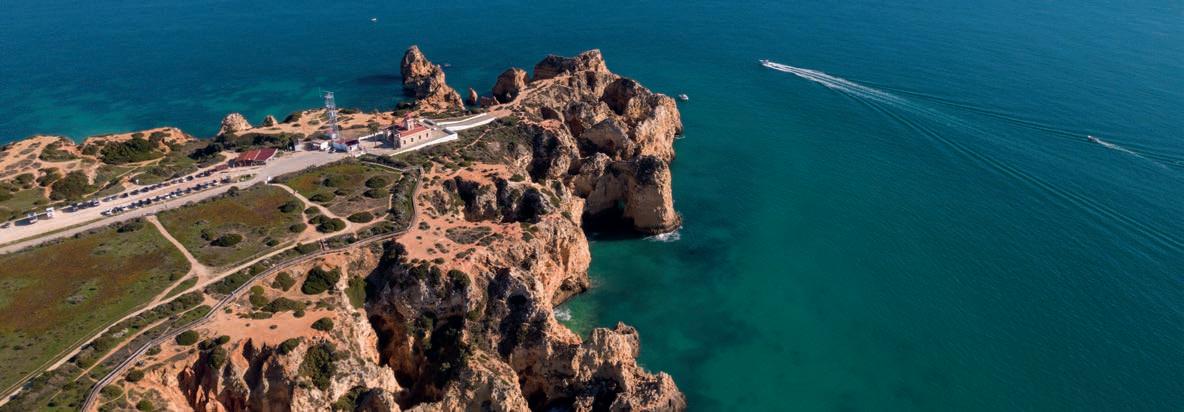
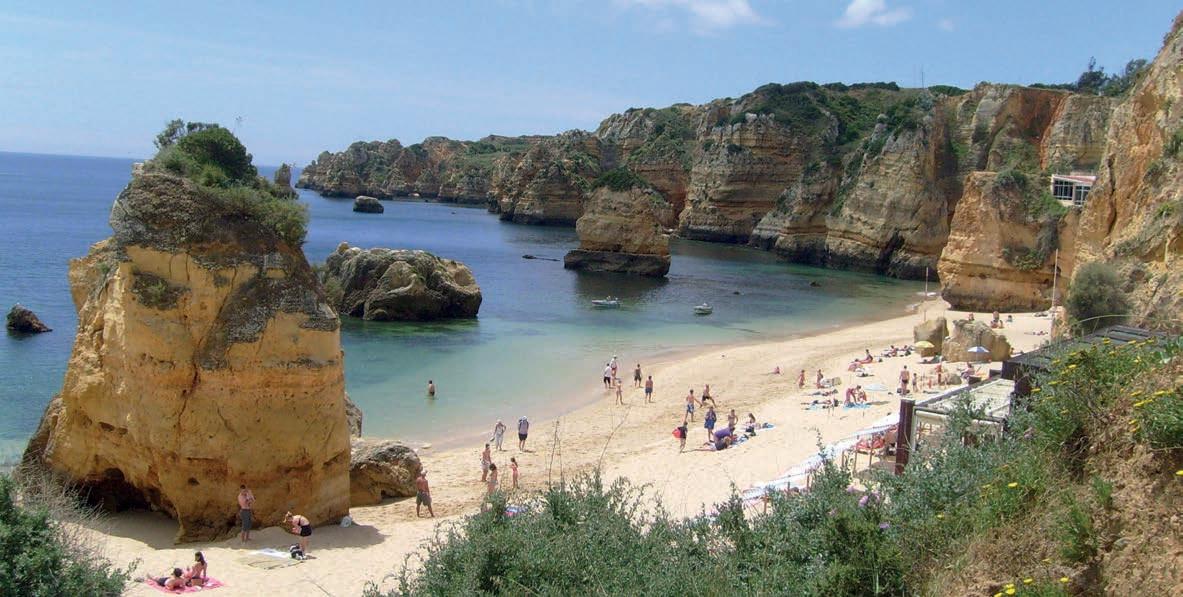
Trata-se de uma praia de referência em todo o Algarve, cercada por rochas douradas e águas cristalinas. Localizada na Costa D’Oiro, destaca-se pela cor turquesa das suas águas e beleza única. Em 2013, foi eleita pela revista Condé Nast Traveller como a melhor praia do mundo e a mais bonita de Portugal.
One of the most iconic beaches in the Algarve, surrounded by golden cliffs and crystal-clear waters. Located along the Costa D’Oiro, it is known for the turquoise hue of its waters and its truly unique beauty. In 2013, it was named the best beach in the world and the most beautiful in Portugal by Condé Nast Traveller magazine.






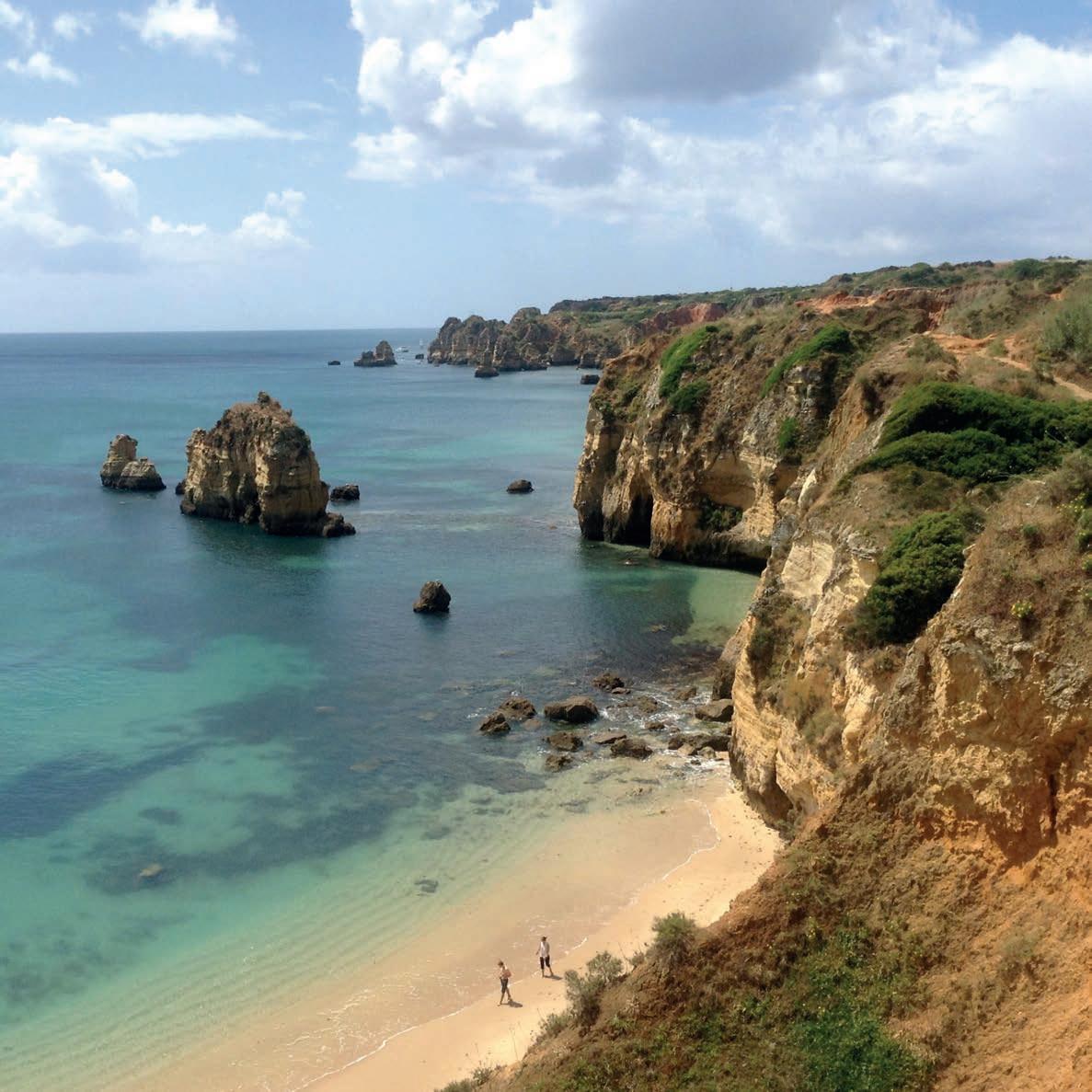
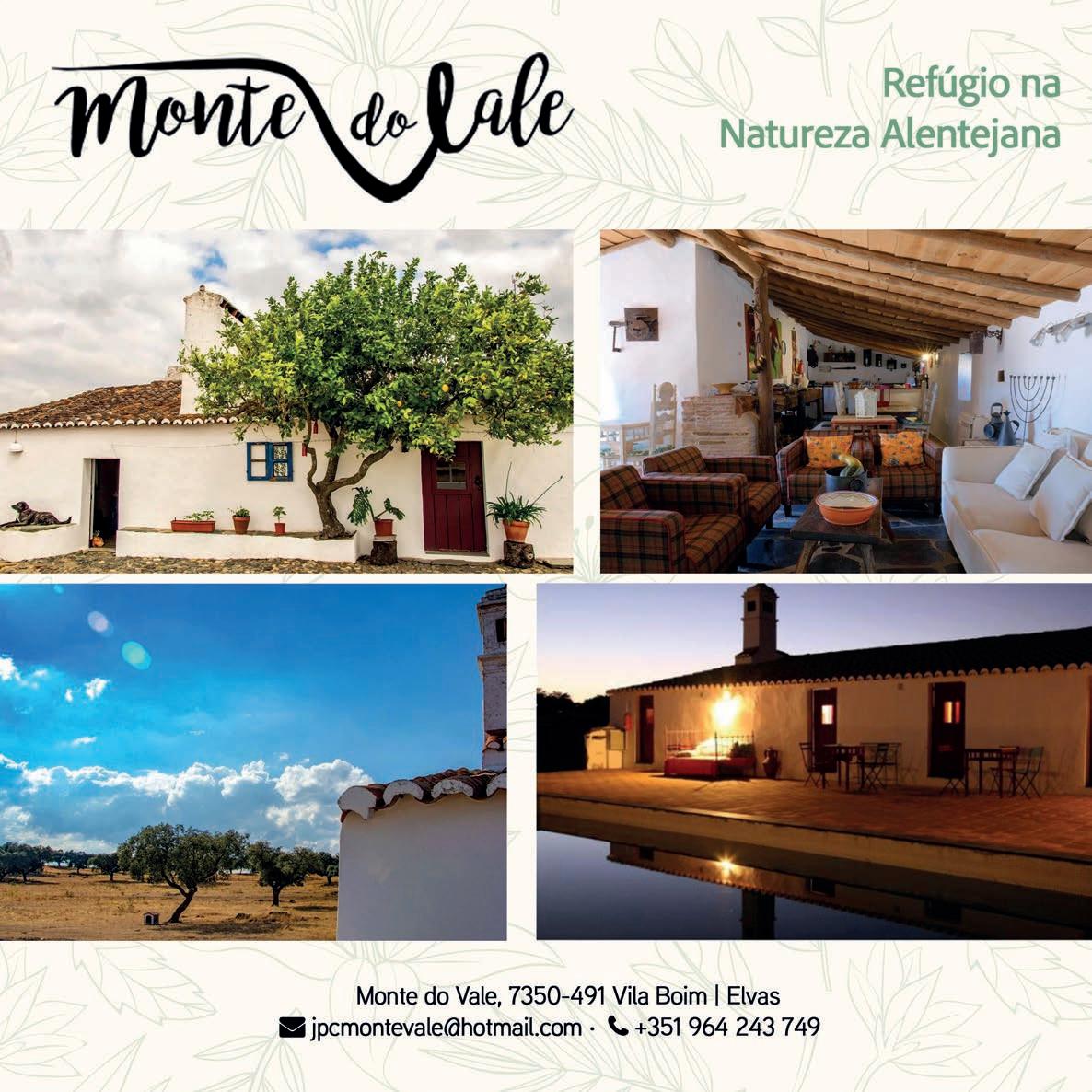
Situada próxima do centro de Lagos, é um espaço abrigado dos ventos dominantes e testemunhas de muitas partidas e chegadas marítimas. Conta com equipamentos de lazer é ainda cenário do tradicional “Banho 29”, festa popular que se realiza na noite de 29 de Agosto para assinalar o fim do Verão e que, diz-se, vale por 29 banhos.
Located close to the centre of Lagos, this sheltered beach is protected from the prevailing winds and has witnessed many departures and arrivals by sea over the years. It is equipped with leisure facilities and also serves as the setting for the traditional “Banho 29”, a popular local festivity held on the night of 29 August to mark the end of summer. Legend has it that a dip in the sea that night is worth 29 swims.

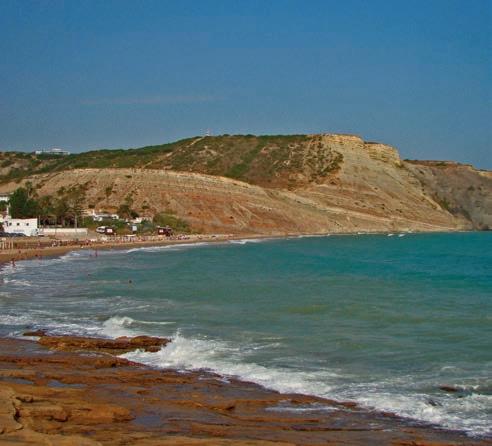
A Praia da Luz é um dos locais turísticos
mais procurados na Vila da Luz, oferecendo um areal extenso com zonas para atividades aquáticas e desportos. Com temperaturas agradáveis no Verão, a praia proporciona uma experiência paradisíaca para famílias e aventureiros. Por aqui, andou também, nos anos 60, o Beatle Paul McCartney, o que acabou depois por contribuir para que o Algarve viesse a ser um destino turístico de muitos britânicos.
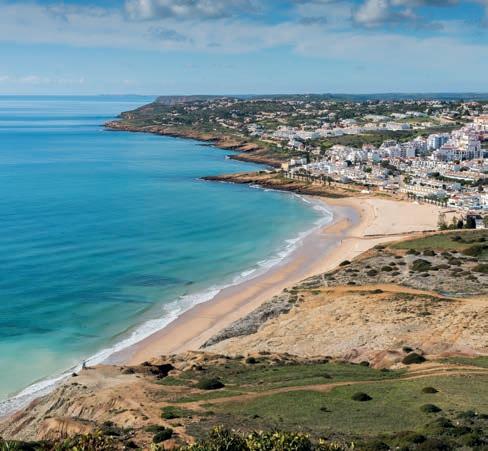
The “Praia da Luz” is one of the most popular tourist spots in the village of Luz, offering a wide sandy beach with areas for water activities and sports. With pleasant summer temperatures, it’s a paradise for both families and adventure seekers. In the 1960s, Paul McCartney spent time here, a visit that would later help turn the Algarve into a famous holiday destination among the British.

Já com mais de 30 anos de existência, este local tem sabido manter-se moderno, através das lojas, cafés e restaurantes. É o espaço ideal para um passeio em família e um porto seguro para as muitas embarcações que visitam esta zona do Algarve.
With over 30 years of history, Marina de Lagos has remained modern thanks to its shops, cafés and restaurants. It’s the perfect place for a family stroll, and a safe harbour for the many boats that visit this part of the Algarve.
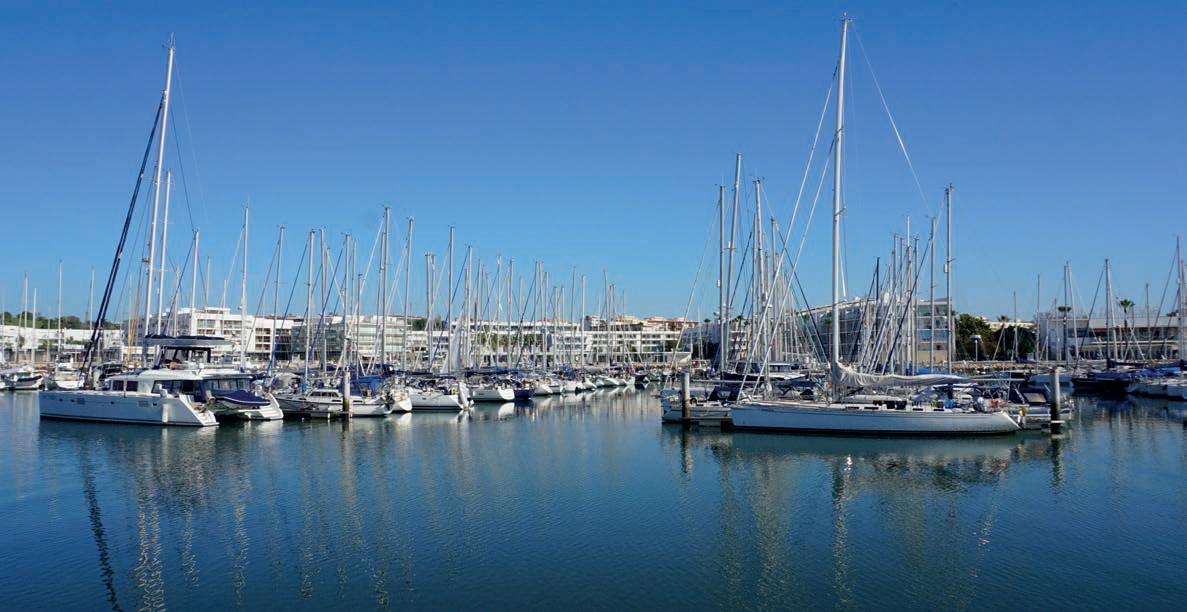

Não faltam alternativas para os amantes de caminhadas. Lagos oferece vários percursos que poderá descobrir através das rotas temáticas como o “Passeio dos Poetas”, pela floresta da Mata do Barão de S. João, ou o Passeio “A ver o Mar”, entre a Ria de Alvor/ Portimão, Lagos e Burgau.
Lagos offers plenty of options for hiking enthusiasts. Several themed trails are available, such as the “Passeio dos Poetas”, which winds through the forest of Mata do Barão de S. João, or the “A ver o Mar”, stretching between the Ria de Alvor/ Portimão, Lagos, and Burgau.
